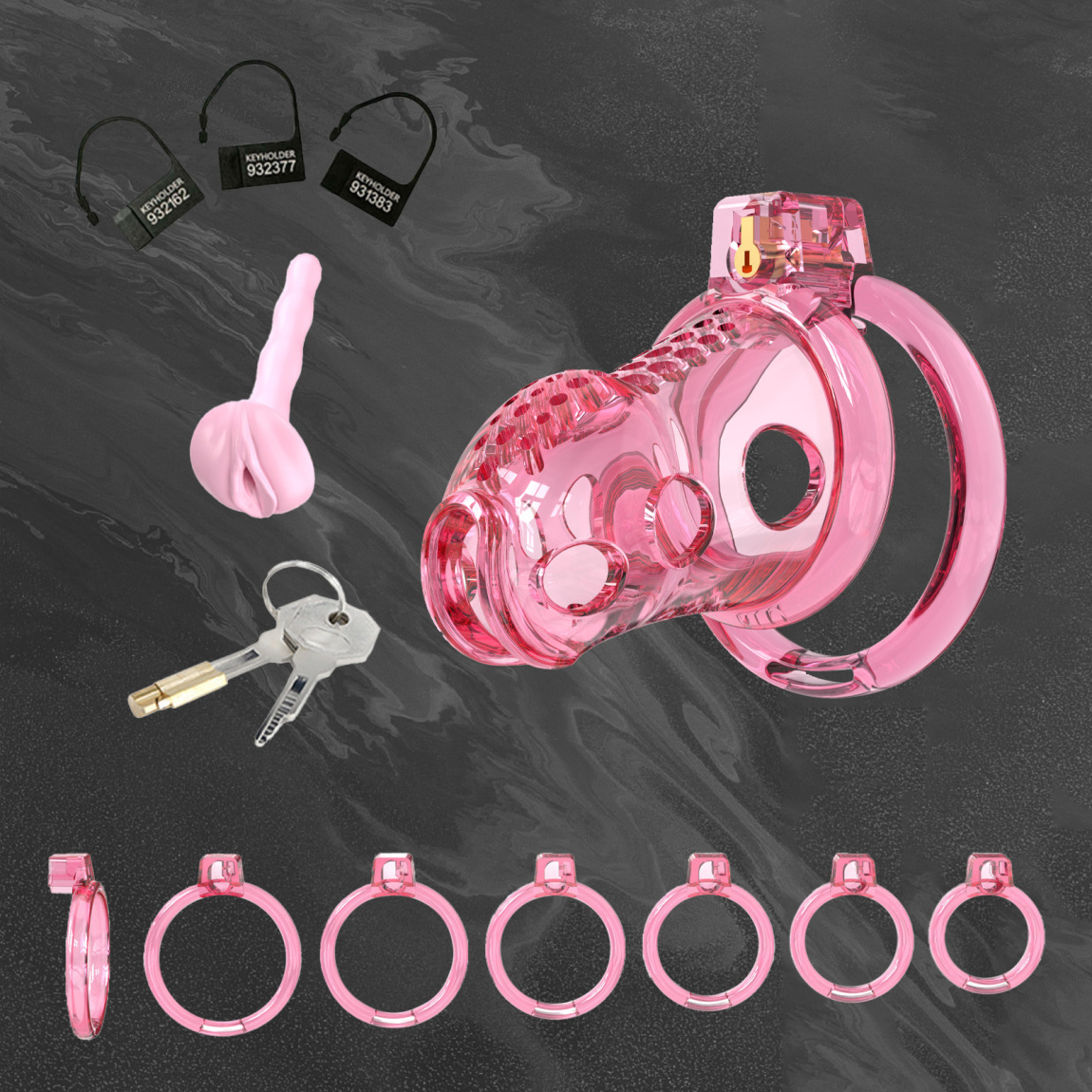Chastity Cage Transforms Love Shocking Partner Secrets
2025-09-02
Relationships are built on trust, intimacy, and shared boundaries. For some couples, introducing a chastity cage reshapes these dynamics in unexpected and powerful ways. Far from being just a device, it becomes a symbol of commitment, control, and communication. On rupipichastity, we explore how wearing a chastity cage changes the balance between partners and why it can strengthen bonds when used with care.
Understanding the Concept
A chastity cage is designed to restrict sexual access, shifting the focus from physical pleasure to emotional connection. While it may seem unusual at first, many couples find that this dynamic brings them closer. The act of wearing the cage represents a conscious choice to prioritize the relationship, placing power in the hands of one partner while deepening dependence in the other.
The Power Shift
One of the most visible changes is the redistribution of control. The wearer surrenders physical autonomy, while the keyholder gains authority over intimacy. This power shift can:
-
Create a stronger sense of responsibility for the keyholder.
-
Enhance feelings of devotion and loyalty from the wearer.
-
Build trust by making boundaries explicit and enforceable.
Rather than weakening the relationship, this dynamic often strengthens it by making roles clearer and communication more intentional.
Emotional Intensity
The emotional connection between partners often grows in surprising ways. Without constant focus on sexual release, the wearer may express affection more openly. Acts of service, verbal appreciation, and physical closeness become more meaningful. Meanwhile, the keyholder can experience the thrill of being desired and the satisfaction of guiding the relationship.
Some couples report that chastity adds excitement and intensity to their everyday interactions. A simple glance or a playful reminder of the cage can create waves of anticipation.
Building Communication
Chastity works only when both partners agree on expectations and limits. This requires open and honest conversations that many couples never have before. They discuss:
-
Duration of wear.
-
Rules and boundaries.
-
Rewards and consequences.
-
Emotional comfort and reassurance.
These conversations lead to stronger communication habits that extend beyond intimacy, improving how partners handle disagreements, decisions, and shared goals.
Trust and Vulnerability
Wearing a chastity cage is an act of vulnerability. The wearer places trust in the keyholder, and the keyholder must act with care and respect. This dynamic reinforces the idea that love is built not just on passion but also on responsibility.
Trust deepens because both partners are reminded daily of their roles. The wearer relies on the keyholder for release, and the keyholder learns to balance authority with empathy.
Breaking Old Patterns
For couples who have fallen into repetitive routines, chastity introduces novelty. It breaks old patterns by redefining intimacy. Instead of relying only on physical satisfaction, couples explore emotional closeness, playful teasing, and new ways to express desire.
This fresh energy can reignite passion in long-term relationships. The cage becomes not a barrier but a tool for rediscovery.
Challenges and Adjustments
Not every couple adjusts easily. Some common challenges include:
-
Feelings of frustration or impatience from the wearer.
-
Pressure on the keyholder to maintain control.
-
Physical discomfort if the device does not fit properly.
To overcome these issues, couples must start slowly, set realistic boundaries, and choose devices that are safe and comfortable. Guidance from communities or resources like rupipichastity can help make the transition smoother.
Positive Outcomes
When handled with care, chastity can:
-
Strengthen loyalty and devotion.
-
Encourage playful intimacy.
-
Deepen trust and communication.
-
Provide long-term excitement in the relationship.
These benefits highlight that chastity is less about restriction and more about connection.
Looking Ahead
Chastity dynamics are not about limiting love but expanding it. For some, the experience of wearing a cage reshapes how they see themselves and their partners. It highlights that intimacy is more than physical release—it is about trust, communication, and emotional closeness.
As more couples explore these dynamics, chastity will continue to evolve from a niche interest into a recognized tool for relationship growth.
Conclusion
Wearing a chastity cage changes relationships by shifting power, building trust, and enhancing communication. It brings vulnerability to the surface and transforms routine interactions into moments of intimacy. Couples who embrace this journey often find that the bond between them grows stronger.
For those curious about how a device can transform connection, rupipichastity offers insights, products, and guidance. With openness and care, chastity becomes less about restriction and more about a deeper celebration of love and devotion.
Frequently Asked Questions
Why do men enjoy being in chastity?
Many men enjoy chastity because it heightens intimacy, builds anticipation, and creates a stronger emotional bond with their partner. The sense of surrender can also increase excitement.
What is the psychology of the chastity cage?
Psychologically, wearing a chastity cage taps into themes of trust, control, and vulnerability. It shifts focus from physical pleasure to emotional connection and deepens relationship dynamics.
Does chastity improve communication between partners?
Yes, couples often report better communication. Setting rules, discussing comfort levels, and agreeing on boundaries encourage open and honest dialogue.
Can wearing a chastity cage strengthen relationships?
For many couples, chastity strengthens commitment and trust. It provides a shared experience that builds intimacy and loyalty over time.
What are the common challenges of long-term chastity?
Common challenges include physical discomfort, frustration, or pressure on the keyholder. These can be managed with proper device fit, realistic rules, and supportive communication.









